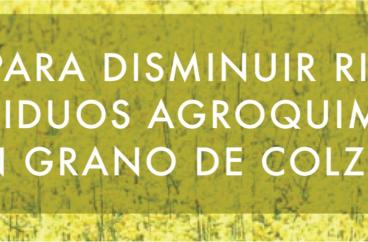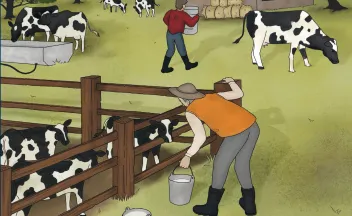
Instituto Nacional de Investigación Agropecuaria

In this contribution, we draw on the authors' experiences with co-innovation projects to compare contextual and organizational factors and discern differences in tangible sustainability outcomes between Uruguay and the European Union.

ABSTRACT.- Nitrogen (N) and phosphorus (P) deficiencies commonly limit plant growth in agroecosystems. While critical N concentration dilution curves (Nc) are widely used to assess N status in crops and pastures, it remains unclear whether P deficiency alters Nc values. This study aimed to evaluate the effect of P deficiency on Nc. For this, a factorial combination of several N and P fertilization rates was applied in eight field experiments, carried out during winter and spring, across Uruguay and Argentina, on annual ryegrass (Lolium multiflorum L.) and perennial tall fescue (L.

ABSTRACT.- The black-tufted marmoset (Callithrix penicillata), commonly found in urban areas of Central Brazil, is vulnerable to pathogen spillover from domestic animals and humans. Here, we report an outbreak of natural canine distemper virus (CDV) infection among urbanized free-ranging black-tufted marmosets. Five fatalities occurred in marmosets living in a neighborhood with unvaccinated dogs. Clinically, affected marmosets had lethargy, ataxia, mucocutaneous ulcerations, and crusting lesions.

In this text we offer a vision to enhance the scaling of the existing niche and contribute to the ST of livestock family farming through an extension policy and discuss the challenges that this implies for rural extension in Uruguay.

Uruguay is historically related to livestock production and Campos ecosystems is a crucial for providing feeding to extensive livestock systems. These rangelands feature a diverse multispecies canopy, essential for biodiversity maintenance, soil erosion control, biogeochemical cycles regulation, scenic beauty, and culture.

ABSTRACT.- Background: Winter dysentery (WD) is an acute diarrheal disease of adult cattle with a significant impact on milk production. Although bovine coronavirus (BCoV) is usually considered the primary etiological agent, other viruses may contribute to the disease. In this study, we investigated a WD outbreak in a bovine
dairy herd in Uruguay through shotgun metagenomic sequencing and molecular virology techniques.

ABSTRACT.- The objective of this systematic review and meta-analysis was to evaluate the effect of probiotic supplementation on ADG, feed intake, and feed efficiency (FE) of dairy calves. A secondary objective was to assess outcomes stratified by probiotic type. Our study included quasirandomized and randomized controlled trials written in English, Spanish, or Portuguese that assessed the effects of probiotic supplementation on the growth of dairy calves. No restrictions were placed on the publication year.

El presente documento se enmarca en el servicio de consultoría de INIA para el Proyecto "Sistemas Agroecológicos y Resilientes en Uruguay", una iniciativa del Ministerio de Ganadería, Agricultura y Pesca - Dirección General de Desarrollo Rural, financiada por el Banco Mundial. El proyecto tiene como objetivo principal fortalecer las capacidades de técnicos y organizaciones en el rediseño de sistemas de producción más sostenibles y resilientes.

ABSTRACT.- In a collaborative effort with private agents of the oilseed industry, INIA conducted a research study to determine the feasibility of framing soybean production in Uruguay into a sustainable development pathway. A spatial model based on land suitability analysis and the imposition of other soil restrictions (risk erosion, current regulations, and permanent soil uses) was adopted to estimate potential soybean yields and the most suitable cropping areas in the country.